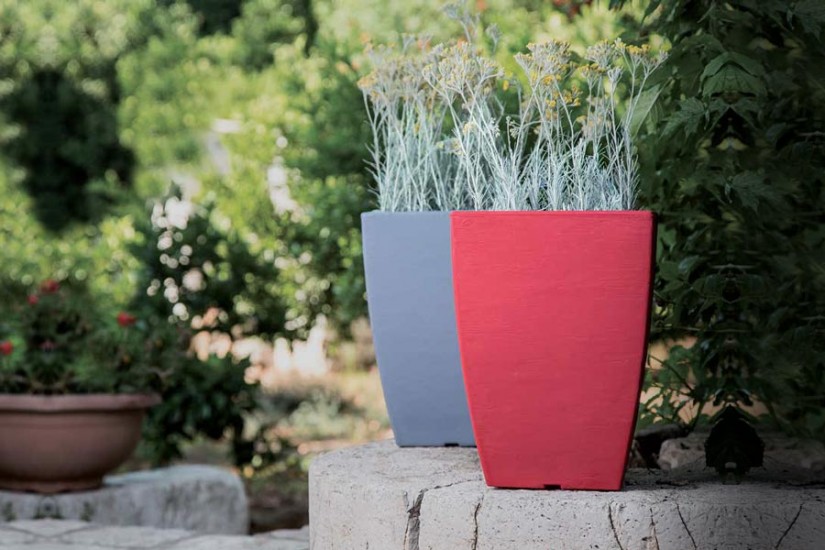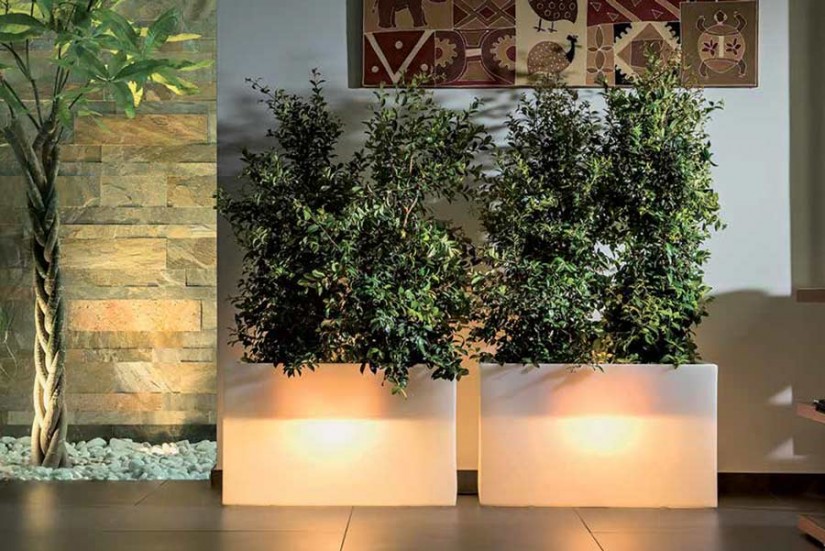To have a garden or a simple green corner with a nice and inviting look, it is necessary, in addition to the passion for plants, enthusiasm and good will, the knowledge of some simple guidelines to follow in every phase, starting from the choice of the vase.
In fact, even if you are not experts in gardening, thanks to some simple indications you can reconcile the habitat needs of plants with your personal taste and the aesthetic and architectural features of the place.
A matter of style
All the ambient decorations of houses, shops, offices, open spaces, follow one of the two general principles: harmony or contrast. Even the choice of vase follows this rule.
For example, if you choose harmony, a traditional earthenware pot with an aromatic plant, placed on a gravel floor, will emphasize a classic style creating a more relaxing atmosphere
Read also: How to grow aromatic plants at home
Or, decorating by contrast, a vase of the right color and modern appearance will emerge in the background, capturing all the attention.
There is no better choice than the other. You should ask yourself what function you intend to entrust to your green corner between balance and visual stimulation, taking care not to make the environment neither monotonous nor confusional.
Earthenware, polyethylene and other materials
Depending on the plant and the environmental characteristics, you can choose a vase in terracotta, polyethylene, stone, wood or other materials, carefully considering its advantages and disadvantages.
The traditional terracotta vases allow a good oxygenation of the soil. At the same time, the porosity of the walls helps the proliferation of harmful fungi and bacteria. Besides, they’re pretty hard to clean.
The polyethylene vases, cheap, light and easy to maintain, are available in all shapes and colors. Design enthusiasts will particularly appreciate those with lighting, which create really special scenic effects anywhere.
On the contrary, as they are not porous, they require the care to control with greater attention the humidity of the soil in order to avoid stagnations.
Other solutions of sure effect are the imposing natural or reconstructed stone vases, the enameled metal vases, or the wooden vases, which however require periodic treatments with impregnating and anti-mould products.
Of course, it is very important to choose the correct size of the vases: as well as for the aesthetics, also not to damage the plant. Usually, it is necessary to transfer the plant in bigger pots as it grows.
Read also: A guide to plant repotting in summer
What's the right color?
An element often underestimated, but that can make a difference to plant health is the color of the pots. In fact, dark vessels tend to retain the energy of the sun’s rays by overheating the soil inside. For this reason they are suitable for plants with roots that are resistant to high temperatures.
Moreover, from the point of view of the chromatic effect, once again it is necessary to follow the principles of harmony or contrast. Choosing pots matching the environment or with the plants that will host, gives a general effect of balance and sobriety. Instead, if you want to highlight it, choose a vase of color complementary to the background: red on green, blue on orange, purple on yellow and vice versa.
Also in this case it is important to make a conscious and measured choice not to make the environment chromatically inexpressive or messy.
Cover: Cromia Collection - Gemma


